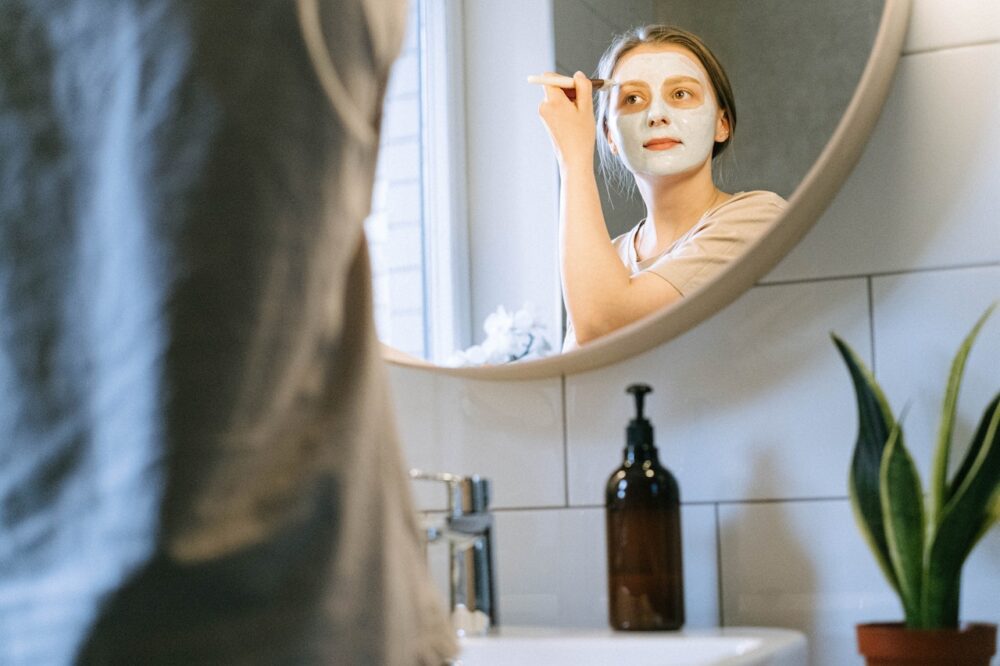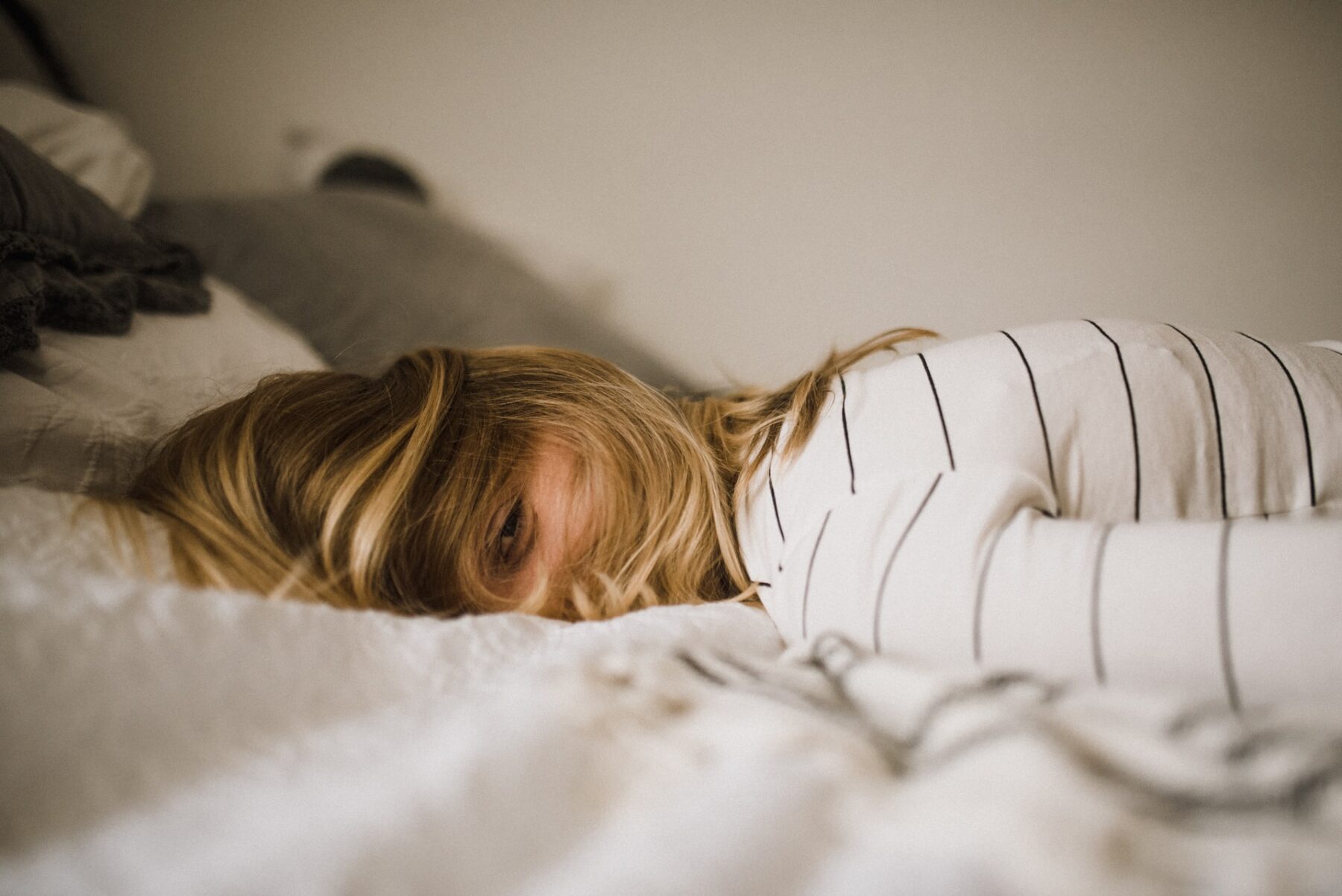Can Your Sleeping Position Cause Wrinkles?
8 Min Read |
Last Modified 27 January 2025 First Added 3 November 2023

We’ve all heard of beauty sleep and probably felt self-conscious about our appearance after a poor night’s rest. However, it turns out that sleep quality isn’t the only thing impacts how we look in the morning – sleep position is important too.
If you sleep on your front or your side, you may have noticed that you wake up with lines on your face. Usually, it’s because of your bedding and how your face was compressed as you slept. It does normally fade but if you’ve noticed those lines are hanging around, we’re here to tell you you’re not crazy.
Unfortunately, it’s a thing. But don’t worry, let’s explore how to limit the impact alongside some simple skincare techniques to keep you looking your best.
As mentioned, there is some evidence that sleeping on your side or your stomach causes changes to your face, including more wrinkles and reduced fullness.
Dermatologist Dr Rosemarie Ingleton took to TikTok to explain:
Additionally, this 2016 study in the Aesthetic Surgery Journal explores “the possibility that compression during sleep not only results in wrinkles but may also contribute to facial skin expansion.”
Exploring the biomechanics of ageing skin, skin elasticity, and various other biological factors, the research came to the conclusion that sleep can cause wrinkles, especially if how we sleep creates facial stress.
However, the same research also identified that it’s not all about sleep, mostly because we don’t have as much control over our sleep position as we may first believe:
While our initial sleep position is a conscious decision, we change positions throughout the night as our bodies unconsciously attempt to minimize […] discomfort
The study also identifies how the rest of our lifestyle, over which we have more control, is equally worth our attention, if not more so.
Simply, it’s the way we treat our skin throughout the day which has the biggest impact on the likelihood of wrinkles. Take the same study’s advice and:
(Oh and by the way, each of the above tips for reducing wrinkles are equally great for improving your sleep too!)
Just like many things you do repeatedly, whether that’s smoking, smiling, or frowning, the way you sleep can deepen compression lines.
If you always sleep the same way, try to mix it up and give your skin a break. Obviously, the best bet is to try and sleep on your back.
Speaking to Glamour.com on the topic, Dr Maiman says:
Sleeping on your back with your head facing out and centre will definitely reduce the risk of developing sleep-related skin problems to the greatest degree.
Sleeping supine means that your face won’t compressed by the weight of your head or at the mercy of friction from your pillow.

Back sleeping isn’t the natural position for most of us. Almost half of adults prefer to curl up into the foetal position. This isn’t best practice if your goal is anti-ageing. But if you’ve ever tried to change how you sleep, you’ll know it’s hard.
We’ve rounded up some top tips for training yourself to sleep on your back:
A lot of people don’t like lying on their back because it causes uncomfortable pressure – a small pillow to support your knees can help this. They should be slightly bent, allowing for relaxed spinal alignment.
If you find your back arches a little when you lie down, you might benefit from a small pillow to bridge the gap, helping you relax. However, be mindful of too much height as that will strain other parts of your body.
Many people find that their pillow doesn’t quite give them enough support. While a rolled-up towel can provide the right support to keep your head and neck in place it’s worth investing in pillows for back sleepers too.
If you find you roll over in your sleep, a U-shaped body pillow can keep you in place.
Looking at the ceiling can reveal a whole new world of distractions that you didn’t notice on your side. If there are lights or mirrors in your eye line, make sure to move or cover them. If it’s your thoughts that are most distracting, try a mindfulness technique for sleep to help relax your body and mind.
It’s recommended to get the right type of mattress for your sleep position. If you’re changing from side sleeper to back sleeper, your existing mattress may offer the wrong kind of support. Back sleepers tend to need firm mattresses to ensure proper spinal alignment. On the other hand, side sleepers need more give to cushion hips, knees, and other pressure points.
You probably don’t need to be told that a good night’s sleep makes your skin better, but science does prove it.
A study in 2015 showed that chronically poor sleepers had increased signs of ageing, diminished skin barrier function, and recovered slower from skin irritation.
Furthermore, a 2020 study in Korea found that after just one night of sleep deprivation reduced skin hydration, gloss, and elasticity, while wrinkles increased.
When you sleep, your body repairs itself – this includes your immune system and your skin cells. So, if you aren’t getting enough sleep, then your skin may look lacklustre.
Let’s finish off with a few of our favourite tips for looking after your skin while you sleep.
Satin or silk sheets and pillowcases are highly recommended for those who are conscious about their skin and hair health. These materials cause less friction, reducing skin abrasion and folds, as well as hair tangles and knots.
If you have curly or dry hair, a satin sleep bonnet can keep it smooth and protected.
If you wear it, you’re no doubt guilty of sleeping with makeup on every now and again. It’s definitely not good for your skin, though. Leaving makeup on all day and night can cause a build-up of sweat, sebum, and other bacteria that clogs your pores and causes irritation and dryness. An oil-based cleanser is best to cut through waterproof makeup and soften your skin.
Increased water intake keeps your skin looking plump, glowy, and smooth. We recommend a soothing herbal tea during your evening routine to wind down and keep thirst at bay overnight.
It might sound gross, but slugging is actually the term for applying petroleum jelly all over your face overnight, and dermatologists approve, particularly if you suffer from dry skin! That’s because it creates a barrier, locking in hydration and keeping out irritants. Although petroleum-based products are recommended, you can also try it with your favourite thick face cream. Do be conscious though that without a proper cleaning routine, it can end up doing the opposite and locking in nasty chemicals.
Many of us wake up in the middle of the night gasping for a glass of water. Well, the same can happen to your skin. If the air in your bedroom is too dry, it will wick moisture from your skin and hair, leaving you with cracked lips and dry eyes. A humidifier can be a good solution as it adds moisture to the air.
Just make sure you keep it clean and monitor humidity levels to ensure they don’t become excessive. When used without care, humifidiers can cause respiratory issues and create the ideal conditions for mould to grow. The Alaska Sleep Clinic, accredited by the American Academy of Sleep Medicine, state:
The humidity level in the bedroom and the nursery should be 30–45%, a maximum of 60%